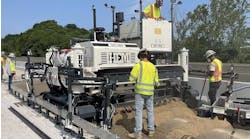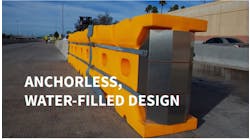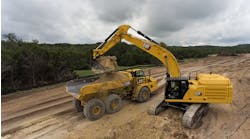To understand the potential significance of the Biden administration’s sweeping infrastructure bill—the Infrastructure Investment and Jobs Act (IIJA)—that was signed into law last year, one need only look at the impact that the Interstate Highway Bill, signed into law by President Eisenhower in 1956, had on the American economy.
Construction of the vast, new, nationwide highway network kicked an already booming economy into overdrive, fueling a surge that lasted well into the 1970s.
For some perspective on the potential benefits the IIJA will have for a high-profile, foreign OEM in North America, Roads & Bridges spoke with Todd Roecker, vice president of growth initiatives for Doosan Infracore North America, for his thoughts on how the North American market looks at the moment—and how the new infrastructure bill may change it in the near future.
RB: How does the state of play in North America look from Doosan’s perspective right now?
TR: We’re extremely happy with things overall. We could use some more equipment on our dealer lots. But we’re in a decent spot: We pushed our dealers to forecast their needs for 2022 as early as September of last year. And they were already very optimistic about the way things were going. They were bullish, so we’ve got ample machines at dealerships. But this is a strong market, and we wouldn’t mind having a few more.
RB: What are your customers telling you?
TR: Mainly that their backlogs are growing—even before [the infrastructure bill] passed. They were in a good spot. And the infrastructure bill makes them feel even more comfortable about where things are heading. Many of our customers tell us they’ve got four or five jobs in their backlogs. And some of them are already starting to buy new machines in anticipation of this new bill.
RB: Speaking of the infrastructure bill—what are your thoughts?
TR: I think it’s great. Every little bit helps, you know? I wish I had a little bit better understanding of some of the main points in it. And the timing is interesting; it appears we’re a couple of years away from some of the projects it covers getting funded. On the other hand, given that we’re already in something of an equipment boom, that two-year timing may bridge that gap and transform this into something of a more sustainable boom. We just need to see how things shake out. But I think the timing is going to help us ride this wave we’re already on.
RB: What parts of the bill do you wish you had more clarity on?
TR: There are just a lot of unanswered questions surrounding it, I think. It touches so many different things that we don’t usually think of as “infrastructure.” It’s not just highways. It’s really a true infrastructure bill, I guess. It will target ports, waterways, rail, electric grids, city water systems—even rural Internet access. So mainly, I’m just trying to understand how the money will be spread out on so many different projects. Will it be spread too thin, and not have the right impact that we need? Another question I have is, how much of this spending will be focused on introducing more modern, “smart” infrastructure into our country, as opposed to just repairing older infrastructure. I think that’s an important point to understand.
RB: And you think you’re already starting to see some pull-through from the bill?
TR: Yes—although we’re not seeing a major impact, yet. There’s definitely an uptick in confidence: People are already anticipating that they will see work come to them from the bill. And some dealers tell us they have customers already placing orders for machines they know they won’t be able to get until next year. They’re basically getting their ducks in a row because they feel confident they’ll have infrastructure jobs lined up by the time the equipment arrives. But one advantage I can definitely see is that this bill is big enough, and covers enough different aspects of our infrastructure that there’s going to be a lot of work to go around. And not just for contractors. Rental yards are already starting to stock up in anticipation of work to come from the bill.



